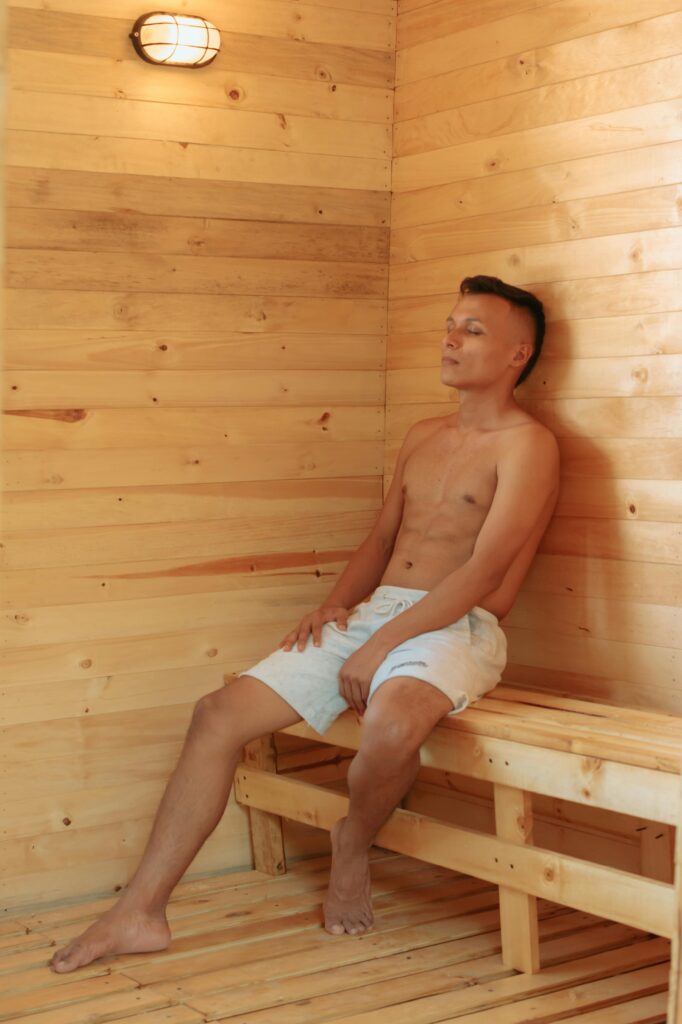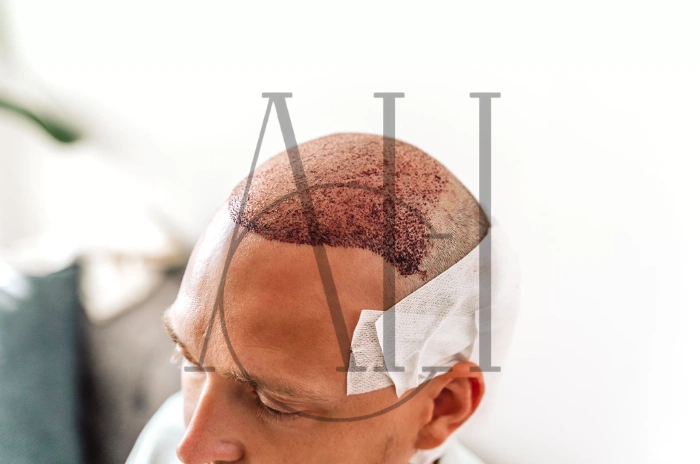After a hair transplant, proper recovery is key to achieving the best possible results. One of the common questions patients ask is: “Can I use a sauna after my hair transplant?” While saunas are relaxing and known for improving blood circulation, they can be risky during the early recovery stage. In this guide, we’ll explore the connection between sauna use and hair transplant healing, when it’s safe to return, and alternatives during recovery.
Table of Contents
ToggleWhat is a Sauna, and How Does It Affect the Body?
Sauna Explained
A sauna is a small room designed to produce high heat, often with steam or dry air, that causes the body to sweat. It helps to relax muscles, improve circulation, and release toxins through sweating.
Effects on the Body
Saunas increase body temperature and open pores. While this is usually beneficial for relaxation and skin health, it may disrupt healing in people recovering from surgery, especially in sensitive areas like the scalp.
Basic Information on the Post-Transplant Recovery Process
Healing Timeline
In the first few days after a hair transplant, the scalp is red, sensitive, and has tiny wounds from the procedure. These areas must be protected to help the new grafts settle properly.
Key Phases
-
Days 1–3: Redness and scabbing
-
Days 4–10: Grafts begin to settle
-
Week 2–4: Initial healing
-
Months 2–6: New hair starts growing
How Soon Can I Sauna After FUE?
Wait Before Heating
If you had an FUE (Follicular Unit Extraction) transplant, it’s best to avoid saunas for at least 3 to 4 weeks. This prevents heat and moisture from disturbing grafts.
Sensitivity of FUE Grafts
FUE grafts are very delicate in the first few weeks. Exposure to heat can increase inflammation, sweating, and infection risk.
Why Avoid Swimming Immediately After a Hair Transplant
After a hair transplant, the newly transplanted hair follicles are extremely sensitive and vulnerable. It’s essential to give them time to settle and anchor themselves into the scalp. Swimming too soon can pose several risks, such as:
- Infection Risk: Swimming pools, hot tubs, and natural bodies of water like lakes and oceans can harbor bacteria and other microorganisms that could lead to infections.
- Chlorine and Salt Damage: The chemicals in swimming pools and the salt in seawater can irritate the scalp and potentially damage the new hair follicles.
- Physical Impact: Vigorous swimming or even submersion in water can dislodge the grafts, leading to poor results.
Albania Hair Clinic – Trapianto Capelli in Albania (@albaniahairclinic)’in paylaştığı bir gönderi
Sauna After Hair Transplant
Sauna Use Is Not Recommended Early
Avoid sauna use during the first month after surgery. High temperatures and humidity can slow healing and lead to complications like folliculitis (scalp inflammation).
Moisture Can Harm Grafts
Moisture and heat may cause scabs to fall off too soon or lead to graft dislodgment. Protecting your scalp from extreme environments is essential.
When Can You Swim After Hair Transplant?
Avoid Swimming Too Soon
Swimming should also be avoided for 2 to 4 weeks, especially in pools or oceans, as water contains chemicals and bacteria that can infect grafts.
Water Quality Matters
If you swim too early, you risk getting chlorine or salt water into the healing scalp, which can irritate the skin and reduce graft success.
Does Heat Affect Hair Transplant?
Heat Delays Healing
Yes, excessive heat from saunas or hot showers can increase inflammation and sweating, leading to poor graft survival and slower healing.
Scalp Needs a Cool Environment
The scalp heals best in a clean, dry, and cool environment. This reduces the risk of infection and irritation.
What Happens If I Sweat After Hair Transplant?
Risks of Sweating
Sweating can soften scabs and irritate the scalp. If sweat mixes with dust or bacteria, it can cause infection.
Physical Activity Caution
Exercise, saunas, and hot weather all increase sweating. Limit these for the first 10 to 14 days after surgery.
Why Is Sauna Bad After Hair Transplant?
Not Just the Heat
It’s not only the heat but also humidity, sweating, and possible exposure to bacteria in public saunas that make them risky.
Graft Safety
Newly transplanted grafts need a stable environment. Saunas increase pressure and stress on the scalp, which can cause grafts to fall out or heal poorly.
What Is The Right Time For Sauna After Hair Transplant?
Best Time to Resume
It’s usually safe to use a sauna 4–6 weeks after a hair transplant, depending on how well your scalp has healed. Always check with your surgeon first.
Listen to Your Body
If you still notice redness or sensitivity, wait longer. Don’t rush back into hot environments.
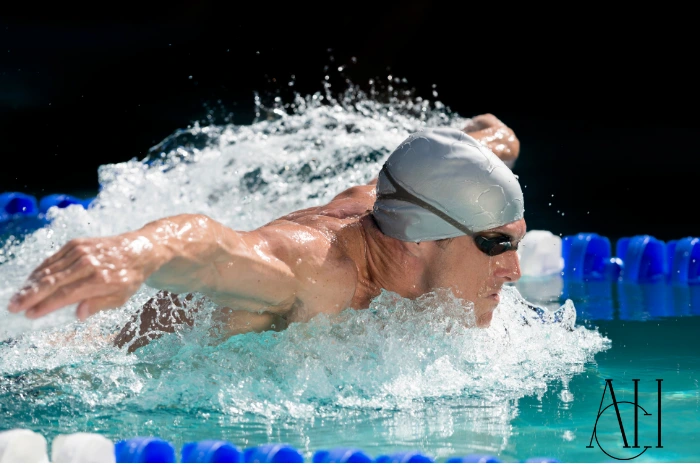
How Long Should You Wait Before Using a Sauna?
Minimum One Month
Wait at least one month to ensure the skin is healed and grafts are securely placed. This helps avoid complications and supports healthy hair growth.
Gradual Return
Start with a shorter sauna session and monitor how your scalp feels. Stop immediately if you feel discomfort or notice redness.
Tips for Safe Sauna Use After a Hair Transplant
Start Slowly
Limit your time in the sauna and keep temperatures lower than usual during your first few sessions.
Stay Hydrated
Drink plenty of water before and after using a sauna. Dehydration can slow the healing process.
Clean Towel Barrier
Use a clean towel to protect your scalp from shared surfaces in public saunas.
Avoid Crowded Saunas
Choose a private or less busy sauna to reduce exposure to bacteria and sweating.
Alternatives to Sauna Use During Recovery
Steam-Free Relaxation
Try alternatives like cool compresses, short walks, or stretching exercises that reduce stress without affecting your scalp.
Warm Baths (With Caution)
Warm (not hot) baths without steam may be safe after 2–3 weeks, but avoid soaking your head.
What Happens If You Use a Sauna Too Soon?
Risk of Complications
Using a sauna too early can cause:
-
Graft loss
-
Infection
-
Swelling
-
Itchy scalp
-
Delayed healing
May Affect Final Results
Poor healing may lead to patchy growth or lower graft survival, affecting your final hair transplant results.
Practical Tips for Swimming Post-Transplant
Follow the Rules
-
Avoid pools, lakes, and oceans for 3–4 weeks
-
Wear a clean cap if you go near water
-
Rinse with clean water after exposure
Use Healing Products
Ask your clinic about antibacterial sprays or scalp moisturizers to use after swimming or sweating.

When Can I Go Out In The Sun After Hair Transplantation?
Protect Your Scalp
Avoid direct sun for the first 2–3 weeks. Use a loose-fitting hat when going outside.
Sunburn Risk
The scalp is sensitive and easily burns after surgery. Sunburn may damage new grafts and slow growth.
When to Return to the Gym After Hair Transplant?
Light Activity First
You can resume light activity like walking after 5–7 days. Avoid heavy workouts, weightlifting, or high cardio for 2–3 weeks.
Sweat Control
Wipe your forehead often and avoid activities that make you sweat heavily in the first 10 days.
When Can You Exercise After a Hair Transplant?
Timeline Matters
-
Light exercise: After 7 days
-
Moderate workouts: After 14 days
-
Intense workouts or sports: After 3–4 weeks
Protect Your Head
Avoid headgear, helmets, or anything that touches your scalp during early recovery.
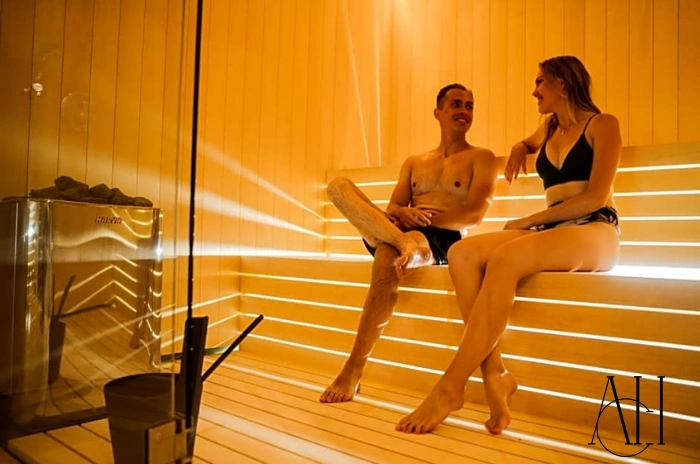
What Are the Risks of Exercising After a Hair Transplant Too Soon?
Graft Damage
Too much movement, sweating, or pressure can lead to graft dislodgement.
Swelling and Bleeding
Early exercise can increase blood flow to the scalp, leading to swelling or even minor bleeding.
Here Are Some of the Risks of Exercising Too Soon After a Hair Transplant:
-
Infection due to sweating and bacteria
-
Grafts falling out or not healing
-
Prolonged redness and inflammation
-
Discomfort or tightness in the scalp
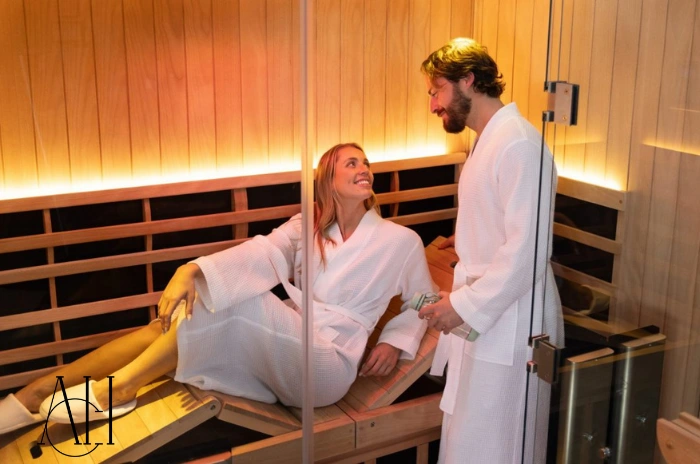
Using a sauna after a hair transplant is not safe in the early stages. Heat, humidity, and sweating can all harm the healing grafts. To protect your investment and ensure the best hair growth, avoid saunas for at least 4 weeks. Always follow your clinic’s post-op advice, and when in doubt, wait a little longer. Your future hairline will thank you!
Frequently Asked Questions
When can I safely use a sauna after a hair transplant?
You should wait at least 4 weeks after your hair transplant before using a sauna. Always ask your doctor first.
Why is it bad to use a sauna right after a hair transplant?
Heat and humidity from saunas can cause sweating, infection, or graft loss, which can slow down healing and affect results.
Can I sweat after a hair transplant?
It’s best to avoid heavy sweating for the first 10–14 days after your procedure to protect the healing scalp and new grafts.
Is it okay to go to the gym after a hair transplant
You can return to light exercise after 7 days, but avoid heavy workouts and sweating for at least 2–3 weeks.
What happens if I use a sauna too soon after a hair transplant?
Using a sauna too early can lead to inflammation, graft damage, or infection, which may lower the success of your transplant.

